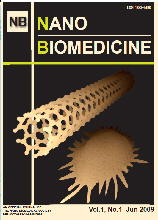Volume 5, Issue 2
Displaying 1-7 of 7 articles from this issue
- |<
- <
- 1
- >
- >|
REVIEW
-
Article type: REVIEW
2013Volume 5Issue 2 Pages 55-63
Published: 2013
Released on J-STAGE: August 24, 2014
Download PDF (247K)
ORIGINAL ARTICLES
-
Article type: ORIGINAL ARTICLE
2013Volume 5Issue 2 Pages 64-74
Published: 2013
Released on J-STAGE: August 24, 2014
Download PDF (1925K) -
Article type: ORIGINAL ARTICLE
2013Volume 5Issue 2 Pages 75-84
Published: 2013
Released on J-STAGE: August 24, 2014
Download PDF (1209K) -
Article type: ORIGINAL ARTICLE
2013Volume 5Issue 2 Pages 85-94
Published: 2013
Released on J-STAGE: August 24, 2014
Download PDF (2380K) -
Article type: ORIGINAL ARTICLE
2013Volume 5Issue 2 Pages 95-103
Published: 2013
Released on J-STAGE: August 24, 2014
Download PDF (1153K) -
Article type: ORIGINAL ARTICLE
2013Volume 5Issue 2 Pages 104-108
Published: 2013
Released on J-STAGE: August 24, 2014
Download PDF (225K) -
Article type: ORIGINAL ARTICLE
2013Volume 5Issue 2 Pages 109-113
Published: 2013
Released on J-STAGE: August 24, 2014
Download PDF (279K)
- |<
- <
- 1
- >
- >|
